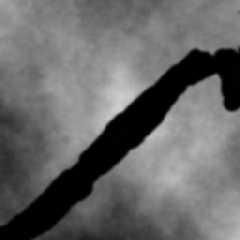|
 |
cobrav10 wrote:
> Hi all,
>
> Am very new to Povray and am trying to draw a scene of a river flowing
> through a desert. I have looked at the tutoials and am up on the sand and
> water texture stuff, but am unsure how to draw the river and ground
> surfaces. My thoughts are;
>
> draw 2 planes, 1 for the river and 1 for the ground.
> Apply isosurfaces of the texture to them and try to have the ground (bumpy
> so bits are higher than the water.
> Where the water plane intersects the ground (apply I think the intersect
> command) so only the water intersected by the ground (that region) is
> displayed.
>
> Am I on the right track??
>
> Thanks for any help.
Whoops, sorry. Here is the heigtfield source file and some relevant code.
camera {
//*PMName scenecam
perspective
location <-4.67182, 2.77695, -9.20606>
sky <0, 1, 0>
direction <0, 0, 1>
right <1.3333, 0, 0>
up <0, 1, 0>
look_at <-2.82934, 1.07086, -0.537524>
angle 45
}
global_settings {
adc_bailout 0.05
max_trace_level 5
max_intersections 1024
}
//*PMRawBegin
//Standard Includes
#include "stdinc.inc"
#include "kolors/kolors.inc"
#include "textures.inc"
#include "stones.inc"
#include "metals.inc"
union {
//*PMName heightfields
height_field {
//*PMName GroundField
png "/home/rylan/povray-3.6/scenes/botanica_hf.png"
smooth
material {
texture {
pigment {
agate
agate_turb 0.5
turbulence <0, 0, 0>
scale 0.1
color_map {
[ 0 color rgb <0.407843, 0.345098, 0.121569>
]
[ 0.25 color rgb <0.596078, 0.513725, 0.207843>
]
[ 0.5 color rgb <0.458824, 0.392157, 0.156863>
]
}
}
}
}
finish {
diffuse 0.65
crand 0.175
}
scale <20.062, 1.131, 15.919>
rotate <0, 0, 0>
translate <-9.46667, 0, -6.8>
hollow false
}
height_field {
//*PMName WaterField
png "/home/rylan/povray-3.6/scenes/botanica_hf.png"
smooth
material {
texture {
pigment {
agate
agate_turb 0.5
turbulence <0, 0, 0>
scale 0.1
color_map {
[ 0 color rgbft <0.054902, 0.90196, 0.81569, 0.2, 0.45>
]
[ 0.25 color rgbft <0.054902, 0.6902, 0.90196, 0.2, 0.35>
]
[ 0.5 color rgbft <0.10196, 0.49804, 0.63137, 0.2, 0.25>
]
}
}
}
interior {
ior 1.45
caustics 0.1
}
}
normal {
ripples
0.15
turbulence <0.1, 0.1, 0.1>
bump_size 0.15
}
finish {
ambient rgbt <0.45, 0.45, 0.45, 0.25>
diffuse 0.45
brilliance 0.25
roughness 0.2
reflection rgb <0.3, 0.3, 0.3>
crand 0.175
}
scale <20.062, 0.157, 14.78>
rotate <0, 0, 0>
translate <-9.4667, 0.2, -6.1874>
hollow false
}
}
--
Stefan Viljoen
Software Support Technician
Polar Design Solutions
Post a reply to this message
Attachments:
Download 'botanica_hf.png' (33 KB)
Preview of image 'botanica_hf.png'

|
 |
|
 |
Cobrav10 : Yes you are on the right track. I've done this before - also
something similar, a volcano with animated lava flowing down the sides. (I
have this... "thing"... for volcanos and tornados. I grew up in tornado
country, used to chase the darned things).
IF all of the land is higher then the water, then no problem, the water can
just be a plane. HOWEVER if there are "low spots" on the land (nearby
depressions) that are NOT supposed to have water, then you need to clip the
water (or use difference{}, maybe with a big box instead of a plane for the
water). Clip / or make a difference{} between the water (smaller oblong
box) and a replica of a piece of the land (etc).
To animate it, you probably want to use "phase" applied to waves / ripples;
or translate the normals (+texture?) from some point by little steps to
some point until your last point is equivalent to your first. (sorry if
that doesn't make complete sense, I'm tired, past my bedtime).
Post a reply to this message
|
 |




![]()